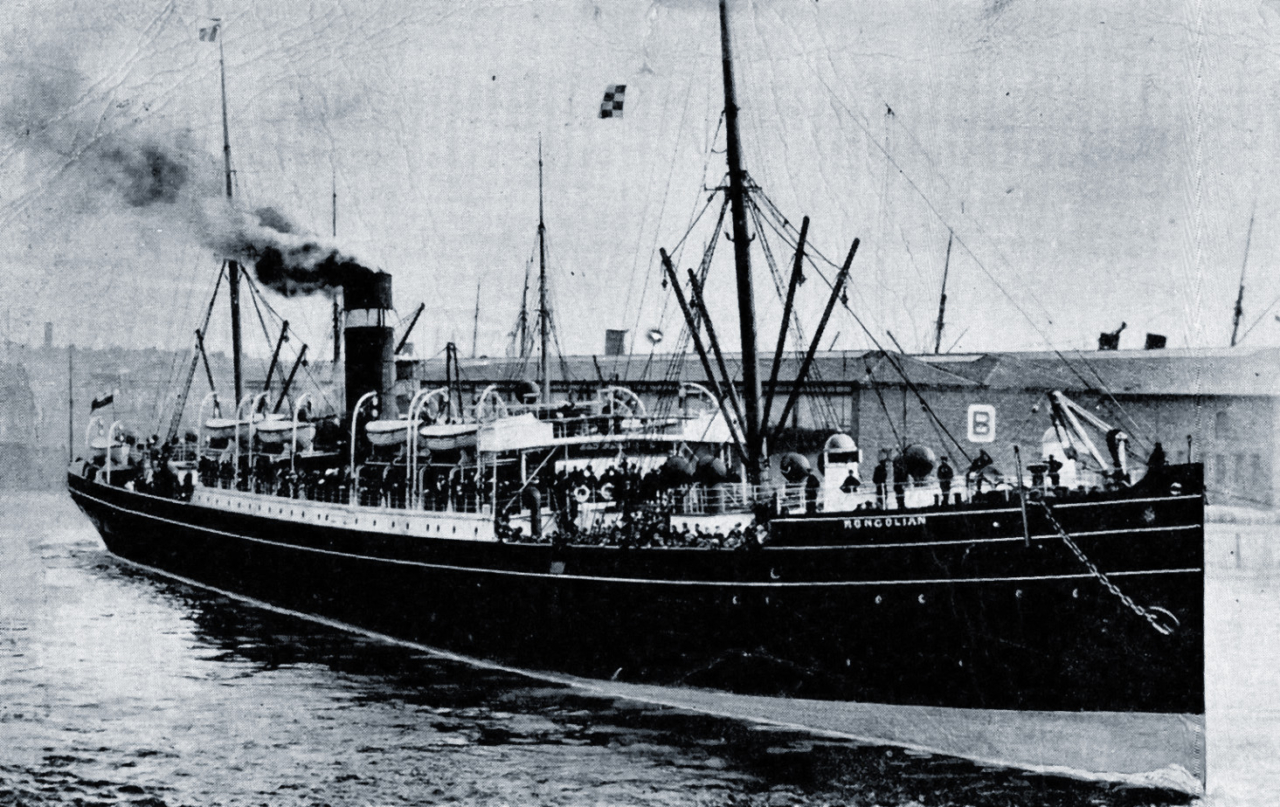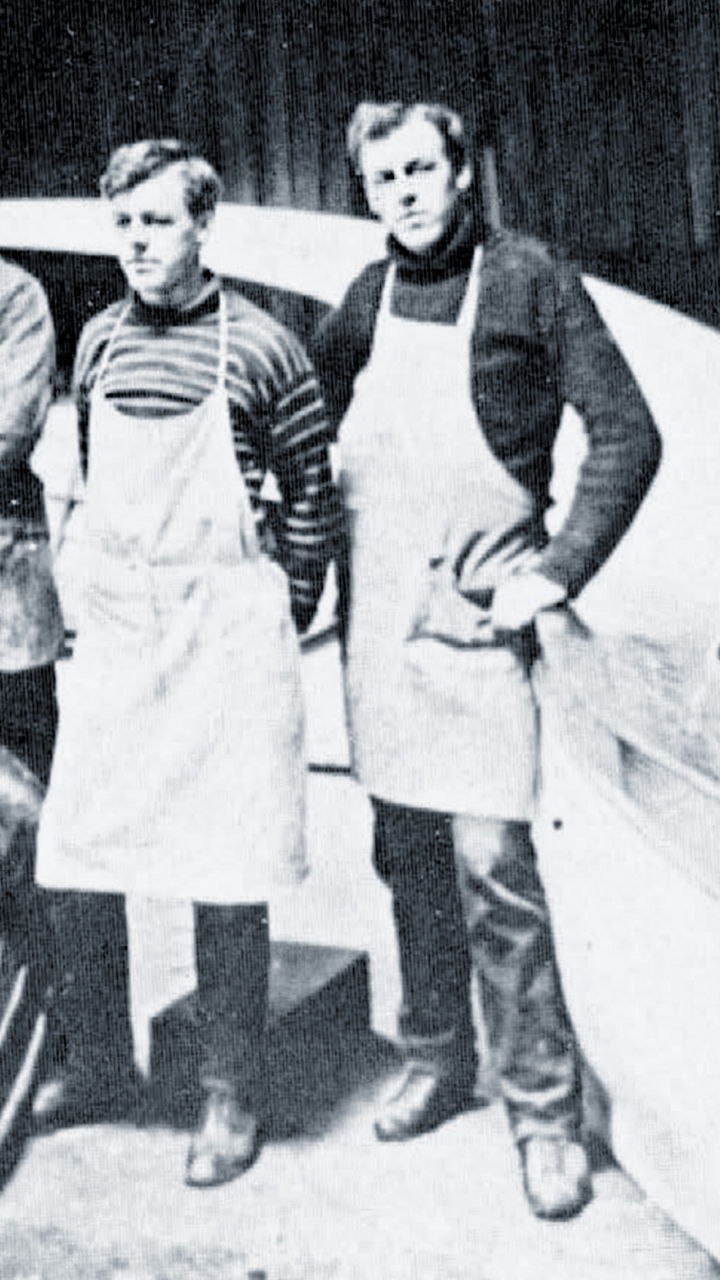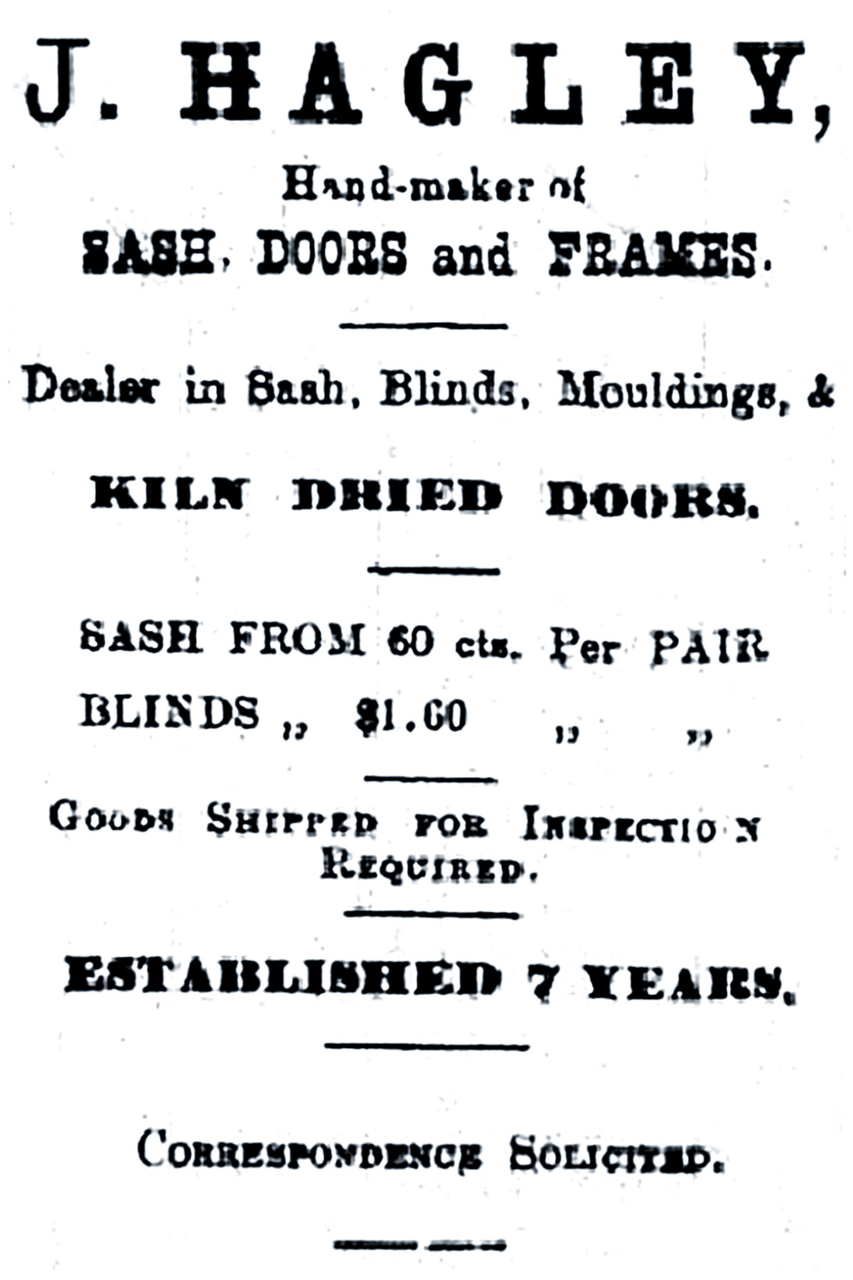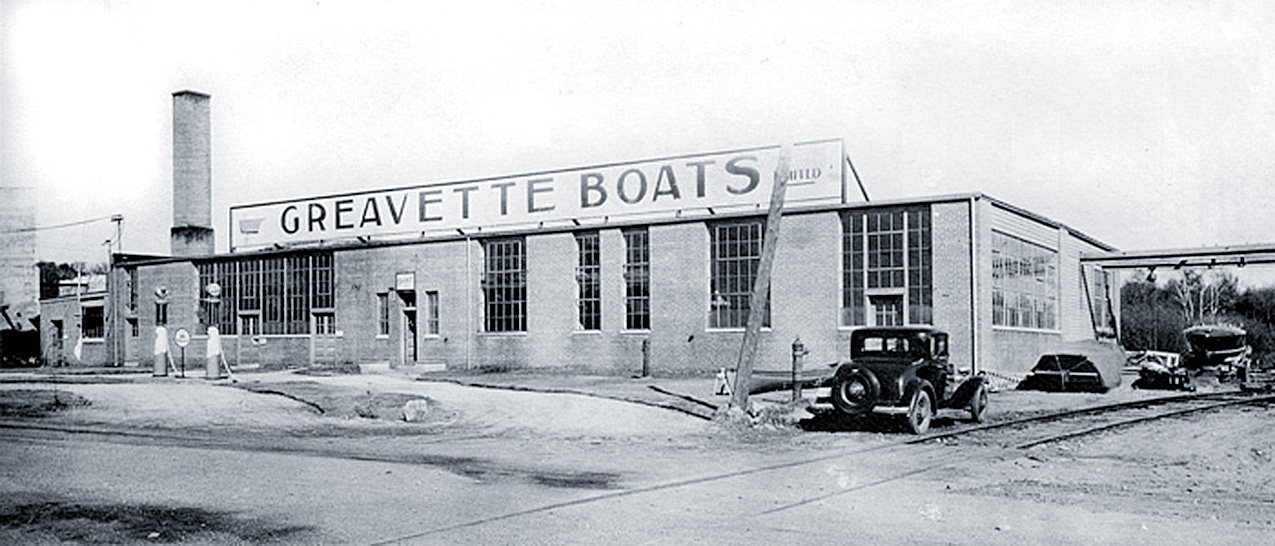The Greavettes Come to Canada
Tom Greavette was just a boy when his family left England, headed for the small town of Gravenhurst, where his widowed mother hoped to find a kindred spirit.
In January of 1894, the Greavett family (as they then spelled their name) immigrated to Canada, the new year bringing with it a new life. Their journey started on January 11, when Rose Elizabeth Greavett and her six children boarded S.S. Mongolian, a ship of the Allan Line that made regular transatlantic crossings. On the 22nd, they arrived in Halifax, and just three days later—the railroad service must have been good—they were in the far-off District of Muskoka, where Rose was getting married to a man she had never met before.

S.S. Mongolian
The Greavettes were natives of Sussex, England, living on the south coast in the Worthing–Brighton area. Rose Elizabeth Baker and Thomas Greavett had been married in 1873, and they were raising a large family when Thomas unfortunately passed away in December 1887 at the age of 36. Left a widow, Rose carried on, and with her older children reaching adulthood—one daughter was already married—she might have decided to settle into middle age and stay put. But instead, she found a new opportunity in a distant land.
It’s clear that Rose had a definite purpose in mind when she travelled to Canada. Unlike many immigrants, there was no hesitation or lingering in one of the larger cities, wondering what to do and where to go. The ship’s passenger list notes that her ultimate destination was Gravenhurst, Ontario, and she lost no time in getting there. Records show that on January 25, 1894, Rose was married to James Hagley at the St. James Parsonage.

Ernie and Tom Greavette, ca. 1905
Although the details aren’t known, it’s pretty clear that the marriage was arranged beforehand, but how had Rose even known about this man, come into contact with him? The answer seems to lie in the fact that they were both Christadelphians, members of a religious sect that rejected some of the beliefs of the established Anglican church. The Christadelphian Advocate, a newspaper that kept its far-flung members informed of events related to the group, may have contained something that established a connection, or perhaps it was just a mutual acquaintance. However it happened, their shared religious beliefs would have provided a strong basis for them to get together.
James Hagley was a Yorkshireman who had come to Canada in 1867. Married with six children, the Hagleys had been living in Hamilton for several years, but left about 1877. It was while in Hamilton that James had been converted and baptized as a Christadelphian. By 1879, the Hagleys had moved to Gravenhurst, where James continued to work as a carpenter or joiner. He had a business making doors, sashes, windows and other items, and he was probably doing well because of the many houses being built in Gravenhurst at this time. Sadly, Hagley’s wife, Jane, died in October 1887, just a couple of months before Rose Greavett lost her husband.
Now married, Rose and James (aged 42 and 55, respectively) had a dozen kids between them—quite a full house. Luckily, some of James’ older children had already left the nest, and many of the others were approaching the age of independence. Rose’s children, as listed in the Mongolian manifest, were Richard, 18; Minnie (aka Sarah), 17; Rose, 14; Thomas, 11; Bertie, 9; and Ernest, 7. For the most part, they spent the rest of their lives in Gravenhurst.
Of course, the most notable of Rose’s children was Tom, who went on to become a famous boat builder, with a large factory in West Gravenhurst. In 1894, he would have still been in school—and possibly was for a few more years—but by the late 1890s he was working for Ditchburn Boats. The 1901 Census shows “Thomas Greavett” listed in the household of Henry Ditchburn, far north in the village of Rosseau. (Oddly, he is also listed in the Hagley household in Gravenhurst.) It’s quite likely that his new step-father introduced him to the art of woodworking and taught him some of the skills he would use in this job.

Ad from Gravenhurst Banner, 1886
As well as making boats, before long Tom was given the task of managing the Ditchburn boathouse in Port Carling during the summer boating season, which he continued until at least 1911. Staying with Ditchburn Boats for over three decades, he eventually became sales manager and vice-president, but then in 1930 he decided to leave to start his own business. Greavette Boats became one of the best-known manufacturers of wooden boats in Canada and continued on for two decades after Tom’s death in 1958.
Tom’s two younger brothers, Bert and Ernie (no kidding) followed him into the boat building trade. Bert first worked at a foundry in Gravenhurst, then later went to Ditchburn’s. Ernie also worked at Ditchburn’s, including spending summers at the Port Carling location. In the mid-1920s, he started his own shop near the locks and was partners with Charlie Duke for two years before returning to Gravenhurst. Not surprisingly, both brothers went to work at Greavette Boats after it opened.
Their older brother Richard went in a different direction: horticulture. In later records he is listed as a gardener and a florist in Gravenhurst, but it’s not clear if he had a shop or was simply a grower that sold to retailers. It’s interesting to note that Richard’s choice of occupation was not something random, since his parents’ marriage record shows that both his father and his maternal grandfather worked as gardeners. In fact, he apparently started doing this kind of work before coming to Canada.
Rose’s two daughters were soon married, Sarah in 1897 and later her sister, Rose. While Sarah lived well into her 80s, the younger Rose fell victim to tuberculosis and died at the age of only 35 in 1915. The 1921 Census shows that her two daughters were then living with their grandmother.
Rose and James Hagley had almost 14 years together before James died suddenly in late December 1907. While carrying in wood for the fire, the 69-year-old James suffered a heart attack. The incident was related in the February issue of the Christadelphian Advocate, along with their sympathies. A widow again, Rose lived another three decades, passing away in 1938 at the age of 87. In her later years, she could at least enjoy the support of a large family and must have been happy to see them doing well in their new home.

Note on the family name—In all the early documents, the surname is “Greavett” without the final e. In 1908, it is still spelled that way on Tom’s marriage record, but in 1910, on his daughter’s birth record, we see “Tom Greavette,” and it is the same again on the 1911 Census. There must have been some pressure to change it, perhaps because people were misspelling or mispronouncing it.
Tom’s brother Ernie also began using “Greavette” around this time. It appears on his 1910 marriage record and on his daughter’s birth record the following year. Bert seems to have held out longer, but eventually the change spread throughout the family. The old spelling is still occasionally seen, however, on records dating into the late 1920s.
Whenever the change happened or why, once the sign GREAVETTE BOATS went up on top of the factory in 1931 there was no going back. “Greavette” was the name that everyone would know and remember, as it became a symbol of quality and style in Canadian boatbuilding.
Gerry Hatherley, MDC Archives Volunteer



